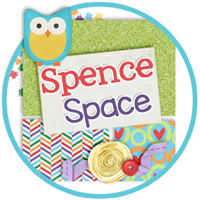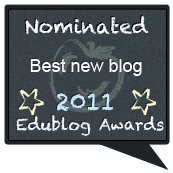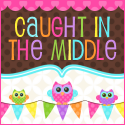One of my favorite ways to teach is through error and frustration. Maybe that sounds mean, but one of the most "a-ha" activities that we do every year results in just that - mistakes, failure and frustration.
Before teaching our unit on Classification of Living Things, I decided a few years ago not to tell the kids what we would be learning next, but to just give an activity with easy-to-follow directions, but no guidance about why we were doing it.
I created a few identical decks of cards with pictures of forty-some animals on them. Each group gets a deck of cards and is given the task to dividing the animals into two groups based on their characteristics. Then, each of the two groups must be divided again into two groups. They record their results on a sheet like this:
What the students do not realize, however, is that the groupings they create and the records that they keep are not really the goal of the assignment - it's the discussions that arise during the activity. Inevitably, every system that the students devise during this process becomes a horrible failure. Some students opt for the first two categories to be land and sea, but cannot decide about the frogs. Some opt for big and small, but then struggle with the medium sized animals. Some opt for furry and not furry, but struggle with classifying the birds and whales.
In the end, we have a whole-class discussion about some of the problems involved in their classification schemes. Every year that we have done this activity, the students have drawn the same conclusions about the difficulty of classifying organisms - which characteristics are important and really show evolutionary relationships, and which ones are not.
Even though our textbook surprisingly does not describe the relationship between evolutionary relationships and common ancestors to classification, the students begin to make these connections during our conversation. We just finished learning about evolution, natural selection and common ancestors, so the tie-in fits perfectly.
Tuesday, December 6, 2011
Naomi's Book of Lists
As anyone who has read our beloved sixth grade novel Becoming Naomi Leon by Pam Munoz Ryan knows, Naomi is good at three things: "1.) soap carving, 2.) worrying, and 3.) making lists." As an activity for the length of the novel, we created our own "Books of Lists."
Each student was provided with a notebook to create lists about the book, both from Naomi's perspective and their own. Some lists were inspired by lists from the book, while other lists were created for students to reflect on the book.
Because their homework and journaling assignments are so writing intensive and because writing is so effortful for many of our students, many found it refreshing to be able to write lists in phrase form, or simply jot down words. They liked having at least one outlet for writing that wasn't checked for mechanics or written in complete sentences; one to simply reflect without the burden of the writing process.
Below are some images of our books:
Each student was provided with a notebook to create lists about the book, both from Naomi's perspective and their own. Some lists were inspired by lists from the book, while other lists were created for students to reflect on the book.
Because their homework and journaling assignments are so writing intensive and because writing is so effortful for many of our students, many found it refreshing to be able to write lists in phrase form, or simply jot down words. They liked having at least one outlet for writing that wasn't checked for mechanics or written in complete sentences; one to simply reflect without the burden of the writing process.
Below are some images of our books:
Monday, December 5, 2011
Blogging about Glogging
Our school recently subscribed to an online service called Glogster EDU. This is the education institutional version of the popular Glogster. In Glogster, you can create posters with text boxes, graphics, images, videos and sound bites to be viewed either within your institution or publically to all Glogster EDU schools. The software has hundreds of preloaded images and sounds, or you can "grab" videos, sounds and images from the web, your files or your webcam.
I am new to glogging, so I allowed the kids to experiment with software by assigning a project with very loose parameters. We are currently reading Pam Munoz Ryan's Becoming Naomi Leon, one of our favorite sixth grade novels. The main character, Naomi, is known for being shy and quiet and expressing her ideas mostly as lists in her notebook. Each student created a glog that captured this aspect of Naomi's character, but with a little more visual flair. They created a poster that included images, text boxes, videos and the like as a virtual scrapbook of her experiences in the novel.
Each student had a different interpretation of the assignment. Some chose to make lists like Naomi, while others chose to feature primarily images. Some wrote diary entries in the text boxes, while others took the "scrapbook" direction more literally and compiled artifacts and pictures with captions. Overall, there was a wide range of ideas that came from the project.
My ultimate goal was to try the software and see if the students had anything unique discoveries or ideas with it. Later on, I can refine my idea of what I would like them to produce and give them more workable parameters for the assignment. They will also have more practice with how to use and navigate the software for future work.
I am new to glogging, so I allowed the kids to experiment with software by assigning a project with very loose parameters. We are currently reading Pam Munoz Ryan's Becoming Naomi Leon, one of our favorite sixth grade novels. The main character, Naomi, is known for being shy and quiet and expressing her ideas mostly as lists in her notebook. Each student created a glog that captured this aspect of Naomi's character, but with a little more visual flair. They created a poster that included images, text boxes, videos and the like as a virtual scrapbook of her experiences in the novel.
Each student had a different interpretation of the assignment. Some chose to make lists like Naomi, while others chose to feature primarily images. Some wrote diary entries in the text boxes, while others took the "scrapbook" direction more literally and compiled artifacts and pictures with captions. Overall, there was a wide range of ideas that came from the project.
My ultimate goal was to try the software and see if the students had anything unique discoveries or ideas with it. Later on, I can refine my idea of what I would like them to produce and give them more workable parameters for the assignment. They will also have more practice with how to use and navigate the software for future work.
Subscribe to:
Posts (Atom)















